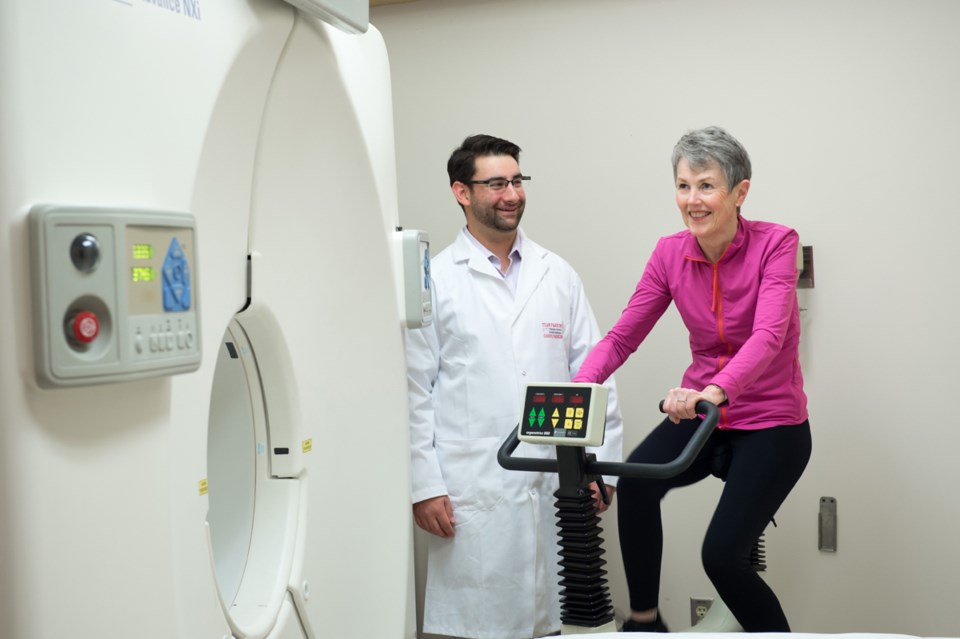It’s common knowledge that regular exercise is an important part of maintaining overall good health.
But can it help battle Parkinson’s disease?
Matthew Sacheli, a PhD student at UBC`s Pacific Parkinson’s Research Centre, is heading up an exercise research program to find out what effect it may have.
“What we’re looking at is the mechanisms of exercise and Parkinson’s disease,” Sacheli told the News.
“What I mean by that is, we know exercise is beneficial for Parkinson’s, but no one knows why.”
To find the answer, the study is using a variety of imaging techniques including Functional Magnetic Resonance Imaging (FMRI) — a procedure using MRI technology that measures brain activity by detecting changes associated with blood flow — and Positron Emission Tomography (PET), that allows a view of specific brain changes at a cellular level.
“PET allows us to see specific cellular changes that occur, so how dopamine cells, which we know are important in Parkinson’s, might change with exercise,” he said.
“And FMRI allows us to see how different brain circuitry changes in response to exercise.”
Dopamine functions as a neurotransmitter — a chemical released by neurons (nerve cells) to send signals to other nerve cells.
Subjects enrolled in the study undergo a three-month exercise program and their brain scans are compared to a baseline taken earlier for comparison.
“We are also looking at the long-term changes and purchase gym memberships for the subjects for three years and encourage them to continue exercising,” Sacheli said. “Then after three years, we track the disease progression.”
To date, the study is into its third year.
“We plan to be done with our data collection for the three-month portions by the end of this year. And then we do the follow up portion,” Sacheli said.
The study will also compare how exercise affects those test subjects who have been active their entire lives and those who have not.
The program is currently accepting people aged 40 to 80-years-old, as long as they are able to be physically active.
And how about lacing up the boxing gloves for some non-contact training?
“There’s certain aspects to the boxing which I think are fantastic,” he said. “But I’m not sure if it’s that which makes the difference, or if the people are just up and moving in a fun, group manner.”
In that respect, a big part in improvement may also have to do with the social aspect fitness groups can have, added Sacheli.



